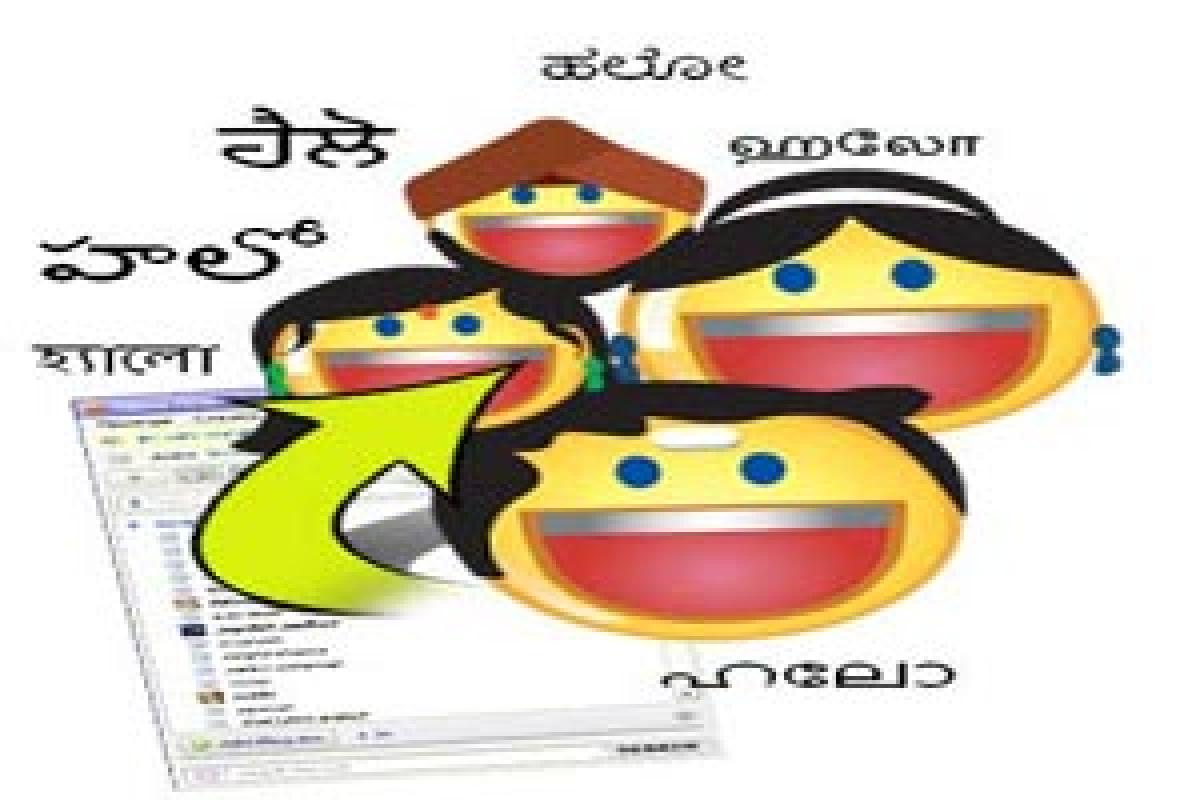Live
- SP T. Srinivas Rao Inaugurates State-of-the-Art Volleyball Court for Police Personnel in Jogulamba Gadwal
- Geeta Jayanti Celebrations Organized at Maldakal Thimmappa Swamy Temple
- Indiramma Housing Scheme Survey Reviewed by District Collector
- Government Committed to Resolving ASHA Workers' Issues: Minister Damodar Raja Narasimha
- 'Refrain from interfering in municipal polls': Union Minister Ravneet Bittu tells Punjab officials
- SC grants anticipatory bail to accused in POCSO case
- Rising Rajasthan Summit to return in 2026, says CM Sharma
- Kerala HC issues contempt notice to official over elephant regulation violations
- 3rd ODI: Have to learn to take things till the end, says Harmanpreet after India's 3-0 defeat to Australia
- Brook is probably the best Test batter in the world right now, says Ponting
Just In

“Kannada medium dropouts rate alarming.\" (THI, Dec. 28, 2016). This is a timely warning. Much is talked about the religious minorities, but about linguistic minorities only sporadically. The Constitution recognises both the minorities.
Fading hopes of linguistic minorities
“Kannada medium dropouts rate alarming." (THI, Dec. 28, 2016). This is a timely warning. Much is talked about the religious minorities, but about linguistic minorities only sporadically. The Constitution recognises both the minorities.
Apprehending problems, the Constitution made enough provisions for the security of minorities:
Article 29 deals with “Protection of interests of minorities: (1) Any section of the citizens residing in the territory of India or any part thereof having a distinct language, script or culture of its own shall have the right to conserve the same; (2) No citizen shall be denied admission into any educational institution maintained by the State or receiving aid out of State funds on grounds only of religion, race, caste, language or any of them.”
Article 29 protects the interests of the minorities by making a provision that any citizen/section of citizens having a distinct language, script or culture have the right to conserve the same. Article 29 mandates that no discrimination be done on the ground of religion, race, caste, language or any of them.
Article 30 speaks of the right of minorities to establish and administer educational institutions. The Article is classified under Part III of the Indian Constitution that elucidates all the Fundamental Rights guaranteed to the citizens of India irrespective of their religion, caste and sex. It upholds the right of the minorities “to establish and administer educational institutions.”
A harmonious interpretation of the two articles is repeatedly made. India, being a diverse country with a myriad of ethnic backgrounds, religious influence and varied sub-cultures, has many minority groups. Articles 29 and 30 of the Indian Constitution effectively aim to eradicate this problem by making a provision in the article known as ‘Right to Cultural and Educational rights of Minority groups.’
The problem is neither exclusive nor confined to Kannada in Kurnool district alone. It is but a complex one. Law makers foresaw it as a national issue and enough safeguards are made in States' Reorganisation Act, 1956 also. Yet, the problem instead of subsiding enlarges. Border lands in all the states are bilingual or even multilingual. Consider the example of AP. There are Kalingas or Odissis in Srikakulam and Vizianagaram districts; Kannadigas in Kurnool, Anantapuram and Chittoor districts; and Tamils in Chittoor and Nellore districts.
There were Departments of Kannada in Adoni and Anantapuram Colleges, catering to the needs of the minority Kannada Students. Sri Venkateswara University Tirupati had Depts. of Kannada and Tamil. As there are no students, along with SVU, Sri Krishna Devaraya University, Anantapuram, and Madras University serve the purpose of Comparative studies only.
Telugu Department in Madras University, once headed by stalwarts like Kandukuri Veereshlingam and Korada Ramakrishnaiah, is struggling to survive. The same is the fate with the Telugu department in Mysore University. Legendary Prof Subbaramappa was an icon of Telugu. Teaching staff outnumber the students in Telugu department of Bengaluru University.
Researcher Tangirala Subba Rao built and nurtured it. Telugu is the mother tongue of a several number of people in Kolar district of Karnataka. There are more Telugus in Hosur in Tamil Nadu than Kannadigas and Tamilians put together.
We cannot blame the administration alone. The root cause is sidelining the mother tongue by the parents and the students of the middle and upper classes. Liberalisation and globalisation added insult to injury. They have been developing a craze for English.
Second and third generation migrants lack interest in the mother tongues. However, it is heartening to note that NRIs are preserving their ancestral culture better than Indians. Every language is patronised by them. They publish journals, wear traditional dresses celebrate festivals and constantly meet. Is the hope for Indian Second Swadeshi/ Re-Renaissance lying beyond the shores of India?
By K C Kalkura

© 2024 Hyderabad Media House Limited/The Hans India. All rights reserved. Powered by hocalwire.com







